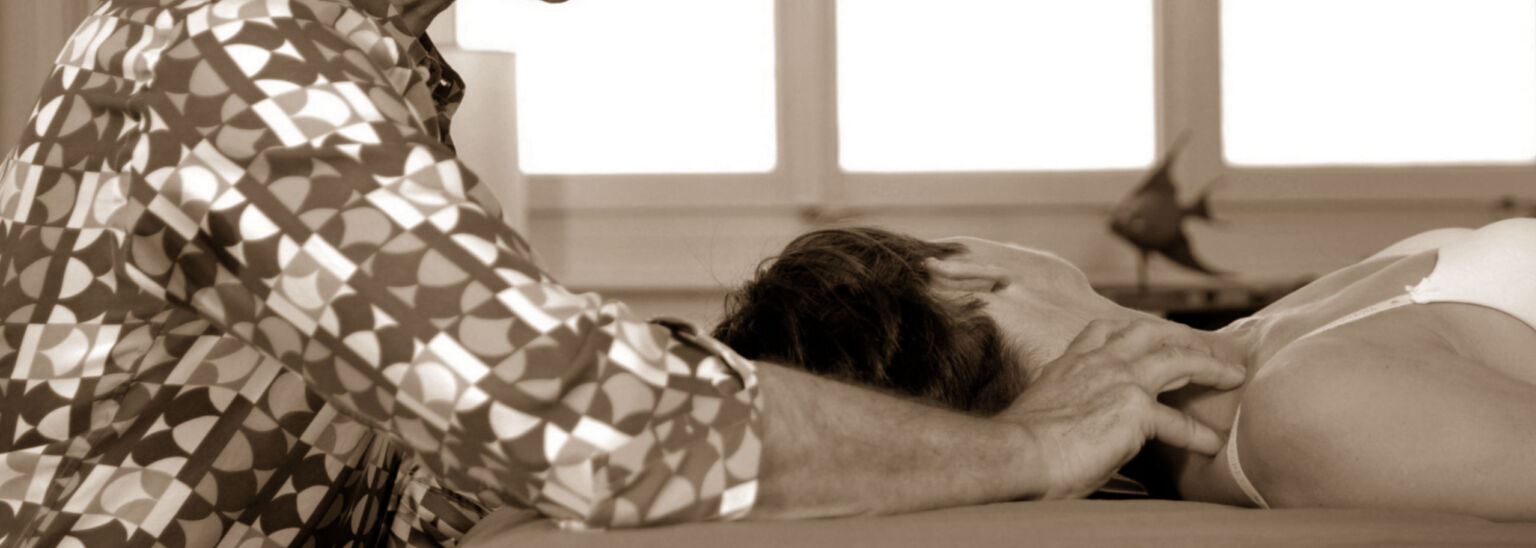
“A body that is in balance,
offers the human being the opportunity for development
on a physical, mental and energetic level“
Dr. Ida P. Rolf
Structural Integration / Rolfing
Work on the human body according to Dr. Ida P. Rolf
“Structural Integration” is a manual body treatment. It was developed and researched over 50 years by the biochemist Dr. Ida P. Rolf. Following the name of the founder, the treatment method became known under the trademarked name “Rolfing”.
Every body has a structure. In the ideal case, this body structure is in balance, integrated in the sense of aligned and erect, organized.
A non-integrated – disorganized, unbalanced – body structure manifests itself in chronic posture problems or in pain associated with them.
The aim of Structural Integration/Rolfing is to bring a disorganized, poorly integrated body structure back into a harmonious relationship, in balance with gravity:
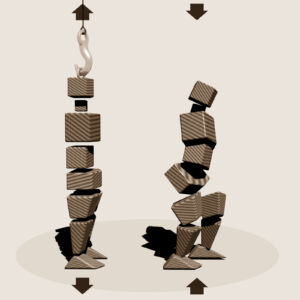
Original-Grafik von J. Lodge: Ida Rolf, Rolfing®. The Integration of Human Structures
A well-organized system, in this case, an upright and efficiently aligned posture, supports our mental well-being and performance.
Gravity
Some individuals resemble a question mark with the stomach pushed forward, a round back or the upper edge of the pelvis tilted forward. Others have a collapsed ribcage, which leads to narrowing of the diaphragm and thus restricted breathing. However, they may all have the impression of standing upright.
People with an integrated body structure are supported by the floor up their whole body in a balanced way. They are connected vertically from the centre of the head to their feet. The body is thus in harmony with gravity instead of fighting it. This enables relaxed and graceful movements.
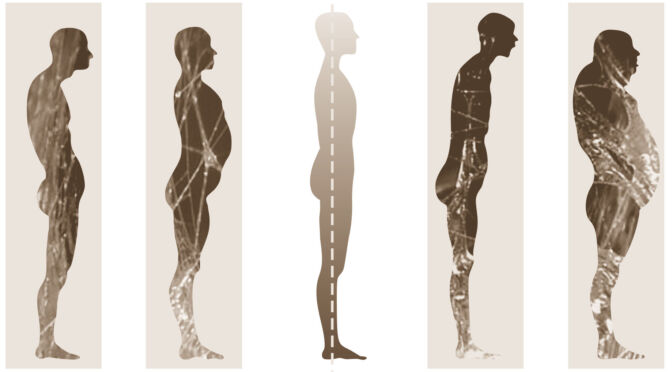
Original-Grafik von J. Lodge: Ida Rolf, Rolfing®. The Integration of Human Structures
Manche erinnern an ein Fragezeichen mit herausgedrücktem Bauch, rundem Rücken oder nach vorne gekipptem Beckenoberrand. Andere sind im Brustkorb zusammengesackt, was zu eingeengter Bewegung des Zwerchfells und somit eingeschränkter Atmung führt. Subjektiv haben jedoch alle den Eindruck aufrecht zu stehen.
Menschen mit einer integrierten Körperstruktur werden vom Boden her, durch den ganzen Körper ausgewogen unterstützt. Sie sind von der Mitte des Kopfes bis in die Füsse lotrecht verbunden. Der Körper befindet sich somit in Harmonie mit der Schwerkraft, anstatt im Kampf mit ihr. Dies ermöglicht gelöste und anmutige Bewegungen.
Fasciae
Fasciae (Latin for ribbons) are fine, tough skins. They are part of the connective tissue and form an organ that wraps up and connects all internal structures of the human body. This organ is called the fascia net.
The fascia net is multi-dimensional. It runs from the smallest cell nucleus to the outermost skin cell through the whole body. It supports and shapes the body by enveloping, dividing, connecting and coordinating bones, muscles, blood vessels, organs, tendons, ligaments, joint capsules etc.
The fascia web is also an extremely powerful conductor. Minute changes in fascial tension are transmitted to the central nervous system at high speed.
Fascia skins thicken and condense when exposed to permanent stress. Accidents or injuries lead to deformation. The natural ageing process of the body also leaves traces in the facial web. The support and elasticity of the fascia diminish.
Due to their biochemical composition, fasciae can be shaped by pressure and heat. Thanks to the plastic ability of the fascia, it can be returned to its natural anatomical position through targeted stimulation.
Structural Integration/Rolfing uses and supports this malleability of the fascia. With well-directed touching, tensions in the fascial net are balanced.
Treatment Process
The session begins with a short observation phase: How does the client walk, stand and sit?
The treatment is mostly carried out on a couch. The client wears his or her underwear and supports the therapist’s work with targeted breathing or small, guided movements.
Ten sessions based on each other at intervals of ten days to three weeks are ideal.
Session 1
In the beginning we are mainly working on the upper body. We are opening the respiration, in particular the inhale. By that, we get to an inspirational new beginning.
Session 2
In this session, focus is on feet and legs, our fundament, the way how we are standing and walking is being optimized.
Session 3
We are connecting the first and second session by working on the sides of the body, from the shoulders down to the hips and the upper legs. Objective is to create a lightness in the way we can stretch ourselves.
Session 4
In this session we are working on connecting the inside of the legs and the pelvis with the upper body.
Session 5
We are connecting the breast, the belly and the pelvis on the frontside of the body. Often we find here resistance against effortless standing.
Session 6
The backside of our legs up to the pelvis and the connection into the back are the main focus of this session. Session 4-6 are focused mainly around the pelvis as the middle of our body around which the rest of the body is organized.
Session 7
In this session we are working on the shoulder, neck and head and bring a new flexibility to the upper center of our body. This balance helps with having a clear head.
Session 8
In this session we eliminate the last blocking tensions in the body and in our movement.
Session 9
The coordination of the upper body brings openness and strength.
Session 10
Rounding up sessions 8 and 9, we ware working on the anchoring the feet and getting the body to feel as a unity. We are also working on last tensions and by doing that and focusing on the body as a whole, we can ensure a long term integration of the work done in the previous sessions.
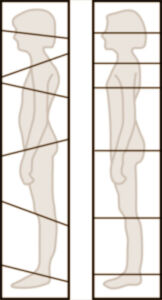
before / after
he sketch on the left (“before”) shows posture problems before the first session:
The legs are overstretched, the pelvis tilted forward. The abdominal wall pushes forward. The chest collapses and is tilted backwards. The head hence must balance with a strong orientation to the front. Breathing is thus impaired both in the lower back and in the upper thorax.
In the short or long term, this incorrect posture leads to chronic head and back pain.
The sketch on the right (“after”) shows the progress after 10 sessions.
After these first 10 session it is possible to do further sessions – often with a bit larger time slots in between – to further strengthen what was elaborated in the first 10 sessions or to work on specific topics.
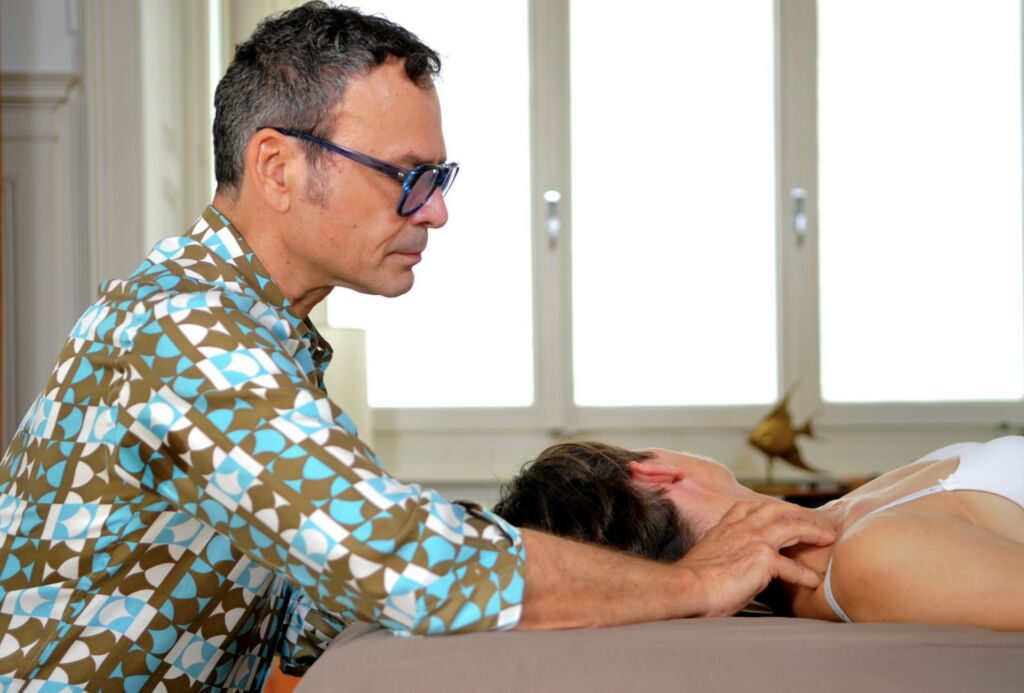
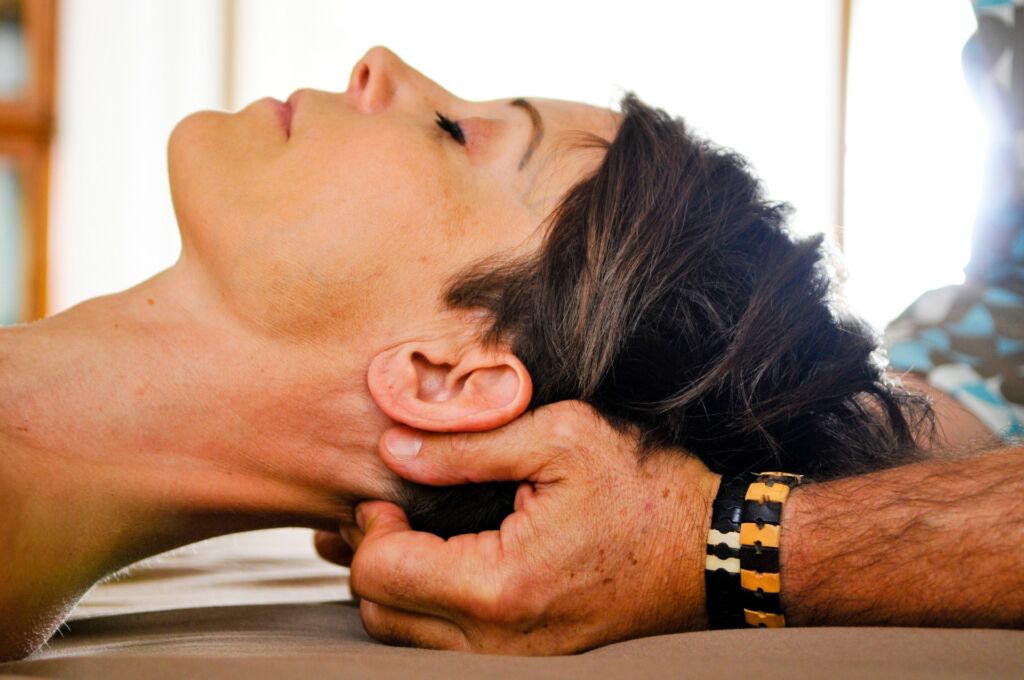
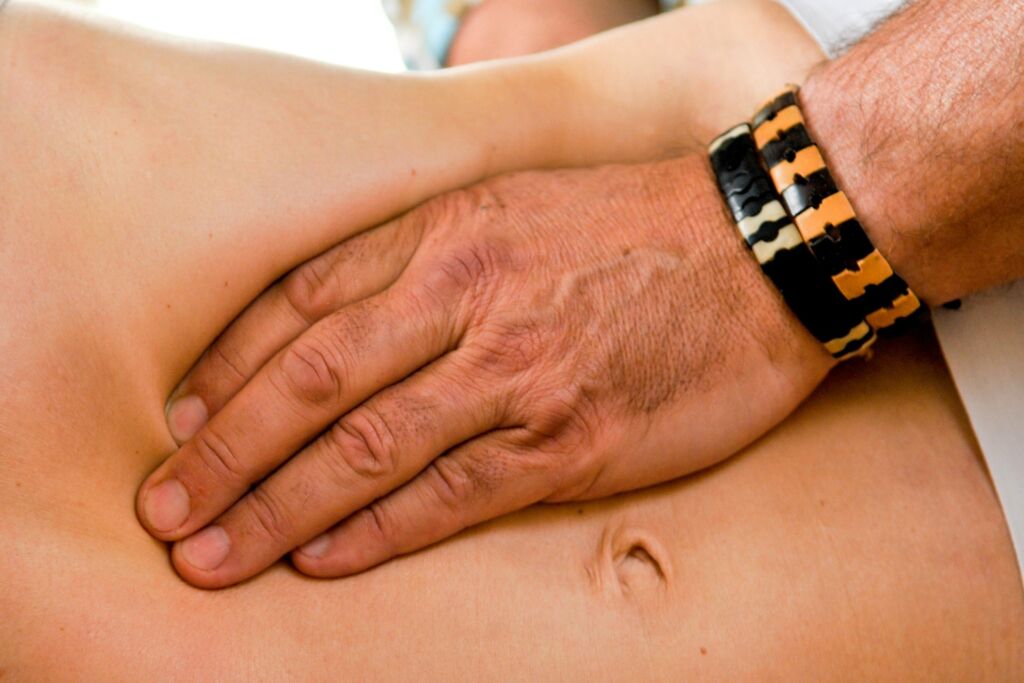
For what and for whom?
Structural Integration/Rolfing focuses on improving posture and movement.
Achievable goals are:
- improved mobility
- facilitated breathing
- a more upright posture
- physical and mental stabilization
- Facilitation of movement (less effort when walking, getting up, sitting down)
The following symptoms can be indications of imbalances in the body structure:
- back-, neck-, headache
- chronic tensions
- restricted movement
Structural Integration/Rolfing is suited for people of all ages:
- after accidents or sports injuries
- one-sided occupational stress (computer work, heavy body work, sports, music, etc.)
- preventive, for a good body feeling and mental well-being
Ida P. Rolf
Dr. Ida P. Rolf was born on May 19, 1890 in Brooklyn, New York. She was one of the first women to earn a doctorate in biochemistry from Columbia University in the USA.
She worked for twelve years at the Rockefeller Institute in the Department of Chemotherapy and Organic Chemistry. She later studied mathematics and nuclear physics in Zurich and homeopathic medicine in Geneva.
Dissatisfied with the medical methods of treatment common at the time, Dr. Ida P. Rolf began researching osteopathy, chiropractic, Tantric Yoga, Alexander Technique and Korzybski’s work on consciousness in the 1930s. In the course of her studies and practical work with people, she developed and refined her method of counteracting a faulty structure of the body and thus reducing physical and mental problems. She herself called her method “Structural Integration”. The treatment became known as “Rolfing”.
During the 1950s and 1960s, Dr. Ida P. Rolf’s successes became so well known that Fritz Perls, founder of Gestalt Therapy, invited her to the Esalen Institute in California, where she led the first training courses in Structural Integration.
In the 1970s, Dr. Ida P. Rolf founded her own institute in Boulder, Colorado.
She died in 1979.
There are several schools that continue Dr. Ida P. Rolf’s quest for the balance between man and gravity, two of which are the Guild for Structural Integration and the Rolf Institute.
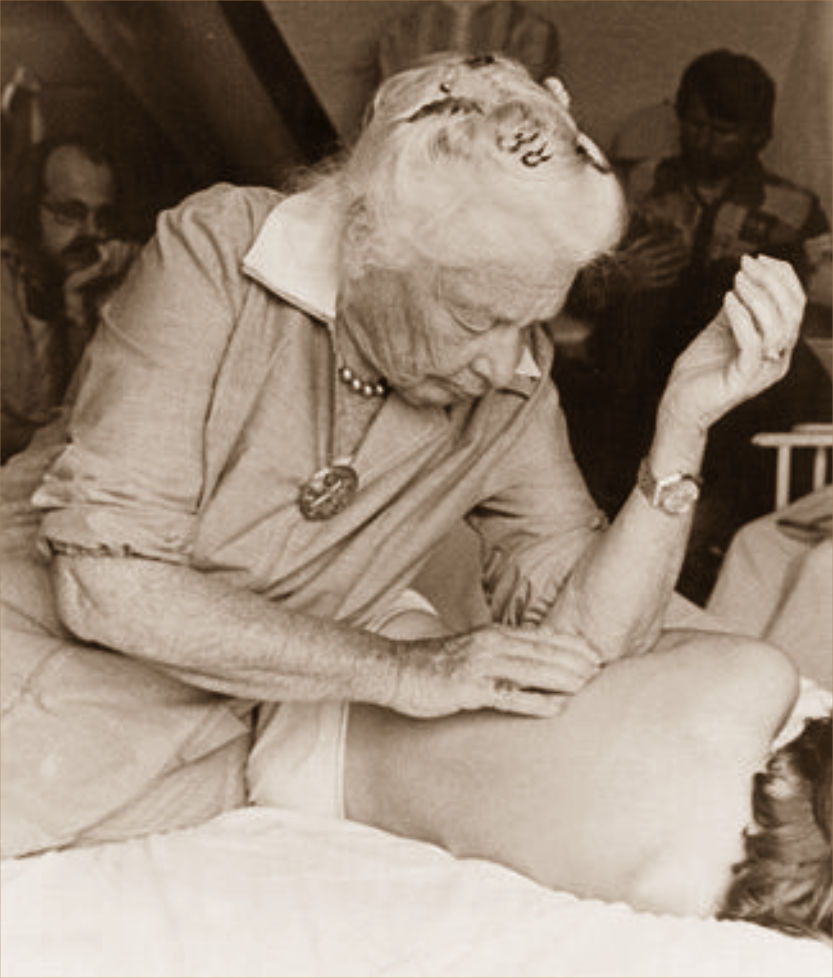
Links and Literature
Rolf Institute (Colorado, Boulder)
Diego Albertani, Horgen
Ales Urbanczik, Feldmeilen
Ellen Bringolf, Zürich
Ida Rolf Interview (SOMATICS, 1979)
Rolfing, a Painful Form of Massage, Regains Popularity (NY Times, 2010)
Ein neues Kapitel der Heilkunst? (GEO Nr. 05/2017)
Ida P. Rolf, Rolfing im Überblick. Physische Wirklichkeit und der Weg zu innerem Gleichgewicht. Junfermann 1993.
Peter Schwind, Alles im Lot. Eine Einführung in die Rolfing-Methode. Droemer/Knaur 1994 (2004).
Hans G. Brecklinghaus, Rolfing – Strukturelle Integration. Was die Methode kann, wie sie wirkt, und wem sie hilft. Lebenshaus Verlag 2015 (6. Aufl.)
Hans G. Brecklinghaus, Rolfing. Strukturelle Integration für Kinder und Jugendliche. Lebenshaus Verlag, 2005.

